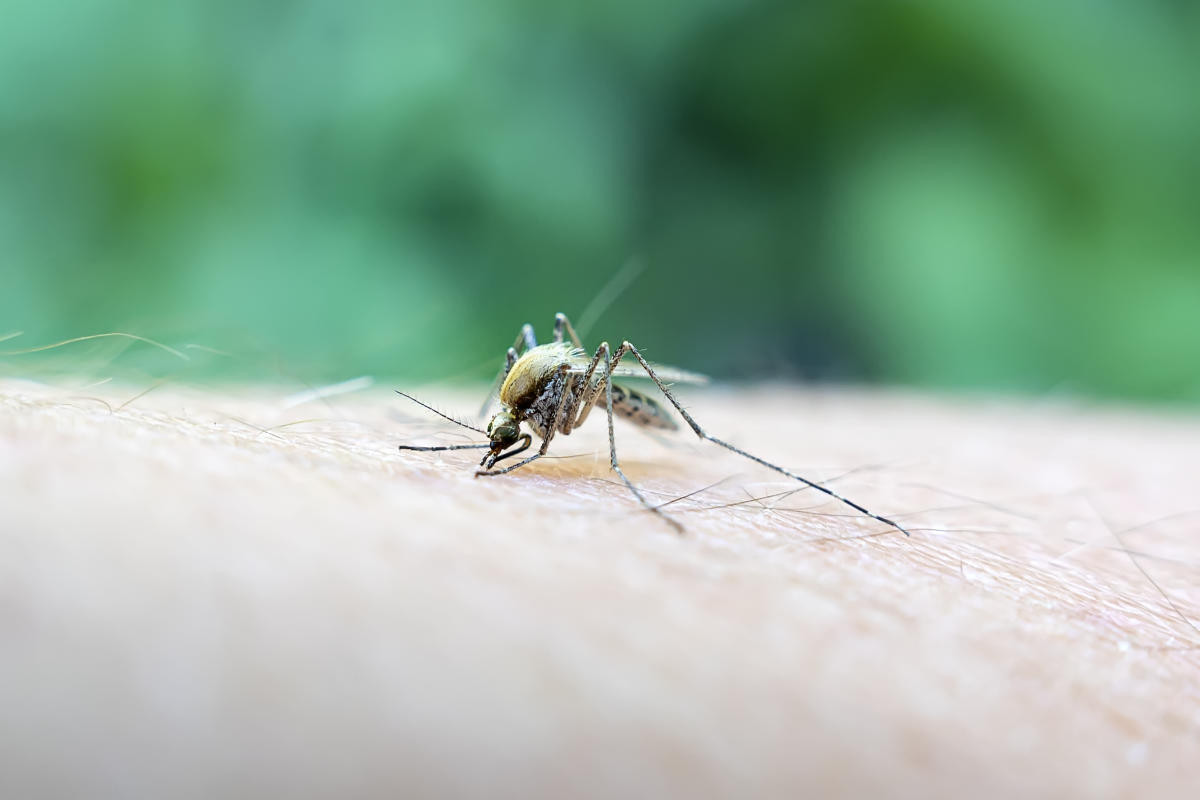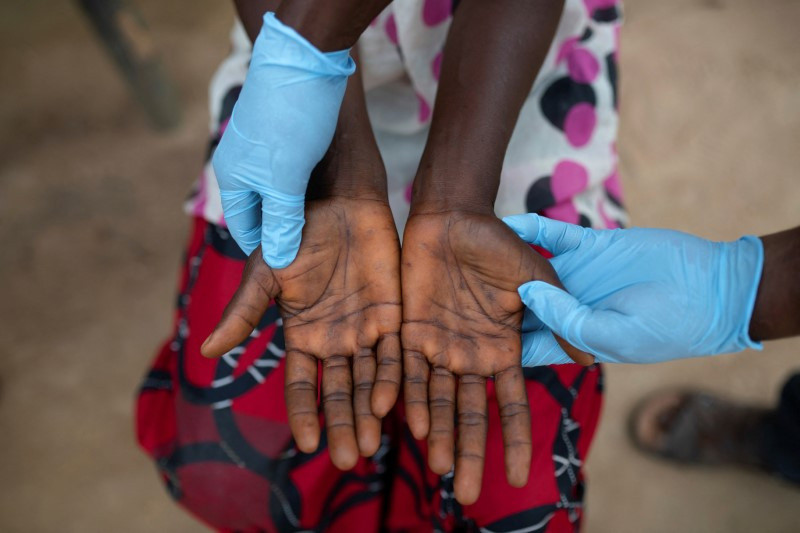The Oropouche virus, responsible for the Oropouche fever, typically circulates in the Amazon Basin. However, its reach is extending beyond this region. In May 2024, Cuba reported its first cases. Now, the United States has followed suit, with approximately 20 American tourists returning from Cuba infected with the virus. The Pan American Health Organization (PAHO) has issued an epidemiological alert, raising the risk level to 'high' for the American region.
The Oropouche virus was first identified in 1955, in Trinidad and Tobago, in the Caribbean. Since then, it has caused over 30 outbreaks in various countries in Central and South America. Brazil, in particular, faces a significant public health challenge. The country is experiencing a surge in infection cases this year. By the end of July, over 7,200 cases were confirmed by RT-PCR testing (compared to 836 for the entire year of 2023). Nearly 76% of these cases were concentrated in the Amazon region.
According to a CDC report, "In August 2024, over 8,000 laboratory-confirmed cases have been reported in Bolivia, Brazil, Colombia, Cuba, and Peru." Not only is the number of cases significantly increasing in endemic areas, but the virus is starting to circulate in regions where no cases had been previously recorded. Furthermore, two recent fatalities reported in Brazil, along with nearly a dozen potential cases of vertical transmission, have sparked concerns about risks to human health.
Transmission and Symptoms
In forests, the Oropouche virus is transmitted through the bites of certain mosquitos that feed on sloths, marsupials, primates, and birds. In urban environments, a species of biting midge (Culicoides paraensis) acts as the vector. To date, there is no evidence of human-to-human transmission. The investigation concerning possible cases of vertical transmission is ongoing.
Symptoms of the infection resemble those of other arboviruses like dengue, Zika virus, and chikungunya. A high fever emerges abruptly, accompanied by chills, headaches, and muscle aches. Other symptoms may include vomiting, diarrhea, fatigue, or a rash.
Oropouche Fever's Recurring Symptoms
Most cases are mild, and the initial symptoms typically resolve within seven days. However, up to 70% of patients experience recurring symptoms in the days or weeks following their recovery. The CDC explains that this symptom recurrence is unique to Oropouche fever. It generally doesn't manifest in cases of similar arboviruses. "The recurrence of symptoms is likely underreported due to limitations in obtaining a complete clinical history or follow-up after the initial illness," the experts emphasize.
Potential Complications and Lack of Treatment
Moreover, in rare instances, the disease can cause inflammation of the brain (meningitis) and neurological problems. "As the number of infected people increases, we are more likely to discover unexpected effects," explains Felipe Naveca, a virologist at the Oswaldo Cruz Foundation (Fiocruz).
There is no vaccine to prevent or medication to treat the infection. Treatment is purely symptomatic, focused on pain relief and rehydration.
Recent Deaths and Potential Vertical Transmission
Both fatal cases originated in the state of Bahia, Brazil. They involved two young women, aged 24 and 21, without any known health issues. They passed away a few hours after being admitted to the hospital. Another potential death linked to the Oropouche virus infection is under investigation. It involved a 57-year-old man from the state of Paraná.
In late July, possible cases of vertical transmission in Brazil were also under examination. A case of miscarriage, several stillbirths, and several newborns suffering from microcephaly could be linked to the mother's Oropouche virus infection. Researchers detected the viral genome in blood and tissue samples taken from one of the fetuses.
PAHO Alert and Global Concerns
Considering the rising number of reported cases in 2024, including in non-endemic areas, along with the identification of fatal cases and potential instances of vertical transmission of the virus, the Pan American Health Organization (PAHO) issued an epidemiological alert for the Americas on August 1. It urges member states to strengthen surveillance and implement laboratory diagnosis for the identification and characterization of cases.
"What worries us most is the expansion of a disease that was previously limited to the Amazon, which has a very low population density, to areas with higher population density," Marcus Lacerda, an infectious disease researcher at Fiocruz, told Science.
Indeed, beyond the over 8,000 new cases recorded this year in South America, infection cases recently emerged (in June-July) among European travelers returning from Cuba and Brazil. In total, the European Centre for Disease Prevention and Control has recorded 19 imported cases of the disease, including 12 in Spain, 5 in Italy, and 2 in Germany.
As of August 16, the United States has reported 21 cases of Oropouche virus infection among American travelers returning from Cuba. Twenty of these patients reside in Florida, while the last one lives in New York. Most of them experienced self-limited illness. Hospitalization was necessary for three patients, but none died. At least three patients experienced recurring symptoms after their recovery.
Recommendations for Travelers and Pregnant Women
Health authorities recommend that travelers visiting at-risk countries take maximum precautions against insect bites. They advise using mosquito nets, insect repellents, and wearing protective clothing. Additionally, outdoor activities during peak vector activity periods (dawn and dusk) should be avoided.
Pregnant women should consider postponing their travel to areas where the Oropouche virus disease is prevalent.
Climate Change, Deforestation, and Urbanization
Public health experts believe that factors such as climate change, deforestation, and uncontrolled urbanization have facilitated the spread of the disease to non-Amazonian states in Brazil and countries that until recently had no cases (including Bolivia and Cuba). These human activities affect reservoir habitats and promote vector-host interactions. Increased human movement across the continent and between forested and urban areas likely contributes to the spread.
A Foretold Tragedy
Therefore, for some scientists, the situation is hardly surprising. "What we are seeing is the chronicle of a foretold tragedy," Socorro Azevedo, a virologist at the Evandro Chagas Institute – a tropical disease research center in Brazilian Amazonia – told Science.
Deforestation and its Impact on Viral Spread
In Manaus, the capital of the Brazilian state of Amazonas, the first cases of the current epidemic are located near recently deforested areas. Deforestation forces animals to relocate, leading insects to seek human blood for nourishment. "In many places where the virus has been detected in South America, we have consistently observed patterns of deforestation," explains Daniel Romero-Álvarez, an epidemiologist at the SEK International University in Quito, Ecuador.
Climate Change and Viral Spread
Similarly, rising temperatures accelerate the maturation of midges, while increased rainfall and flooding create more standing water where insects can reproduce. A model published in 2023 by Romero-Álvarez, taking into account the current climate and vegetation loss, suggests that up to 5 million people in the Americas are threatened by the virus. This number could be underestimated, especially if the Oropouche virus can be transmitted via insects present in other regions. This remains to be determined.
Urgent Need for Research and Monitoring
Scientists fear that as the virus spreads, it could undergo genetic changes that make it more dangerous. Therefore, it is urgent to study this virus in detail and monitor the evolution of its genome.

















